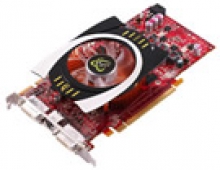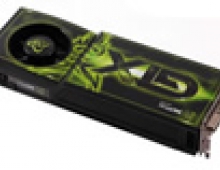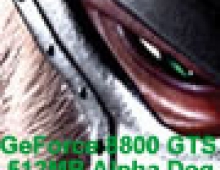XFX 7800GT
4. Advanced Features
 nVidia added Rotated Grid Multisampling in their Nv4x chipsets, increasing image and color quality in AntiAliasing modes. This new feature was introduced with the 6800 product series. Now, nVidia had to push things a little further, adding some new AntiAliasing methods. These are Gamma Correct Antialiasing and Transparency Antialiasing and are part of the Intellisample 4.0 technology. It is very interesting to see how the new G70 chipset performs under these antialiasing modes and if they actually make a difference in image and color quality.
nVidia added Rotated Grid Multisampling in their Nv4x chipsets, increasing image and color quality in AntiAliasing modes. This new feature was introduced with the 6800 product series. Now, nVidia had to push things a little further, adding some new AntiAliasing methods. These are Gamma Correct Antialiasing and Transparency Antialiasing and are part of the Intellisample 4.0 technology. It is very interesting to see how the new G70 chipset performs under these antialiasing modes and if they actually make a difference in image and color quality.
- Gamma Correct Antialiasing
Gamma-adjusted rotated-grid antialiasing removes jagged edges, promising incredible image quality. You will find the option to enable Gamma Correct Antialiasing under the "performance and quality settings" tab. You should select the "advanced settings", and there it is:

In order to check the quality improvement you can gain with this new feature, we used Far Cry and HL2. Below you can see the results we got. Clicking on the images will reveal a higher resolution image:
Far Cry - Gamma Correction |
|
 |
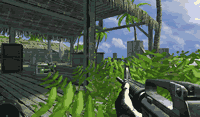 |
| NoAA | 8x AA / Gamma Correction |
| HL2 - Gamma Correction | |
 |
 |
| NoAA | 8x AA / Gamma Correction |
As you can see, differences can be easily seen on vegetation, smoothing the edges of leaves. In HL2, you will notice that the fence seems more realistic. Differences in lighting effects have to do with simple AntiAliasing and not with Gamma corrected antialiasing.
- Transparency Antialiasing
Both new antialiasing modes—transparency adaptive supersampling and transparency adaptive multisampling—are ideal for outdoor environments, scenes with vegetation, chain link fences, and any situation where the models are seen as very thin from the angle of viewing. The graphics processor will take additional texel samples and antialiasing passes to enhance the quality of thin-lined objects. According to nVidia: Transparency adaptive multisampling also improves antialiasing quality—with even higher levels of performance because one texel sample is used to calculate surrounding subpixel values. Although transparency adaptive multisampling is not as high quality as the supersampling method, its increased efficiency balances improved image quality and high levels of performance. The visual improvements of adaptive supersampling are obvious when compared to generic supersampling/multisampling approaches.
Again, the settings to change Transparency Antialiasing are hidden in the "performance and quality settings" tab.
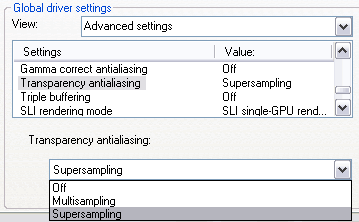
Below you can see the results we got with FarCry and HL2. Again, clicking on an image will open a larger picture:
| Far Cry - Transparency Antialiasing modes | |
 |
 |
| MultiSampling | SuperSampling |
| HL2 - Transparency Antialiasing modes | |
 |
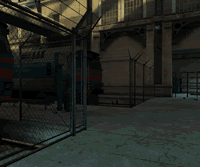 |
| MultiSampling | SuperSampling |
As you can see, there is a major boost in image quality. Fences and vegetation are generally rendered on very simple polygon models. However, Transparency antialiasing makes a step forward in image quality.
Someone might say that these new antialiasing modes might reduce the performance of the graphics card. nVidia proved this statement wrong. We were amazed to see that there is no significant difference between 4xAA, 8xAA and Supersampling Transparency AA.
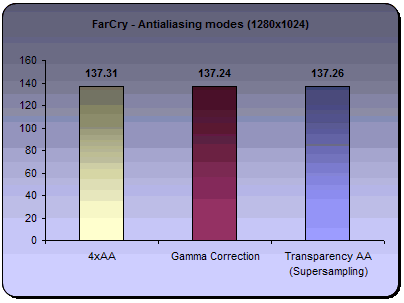

There is, however, a known bug with the latest 78.01 and 77.77 graphics drivers that makes fences disappear under certain circumstances. nVidia will look into this issue and release a new device driver soon, correcting this problem.

